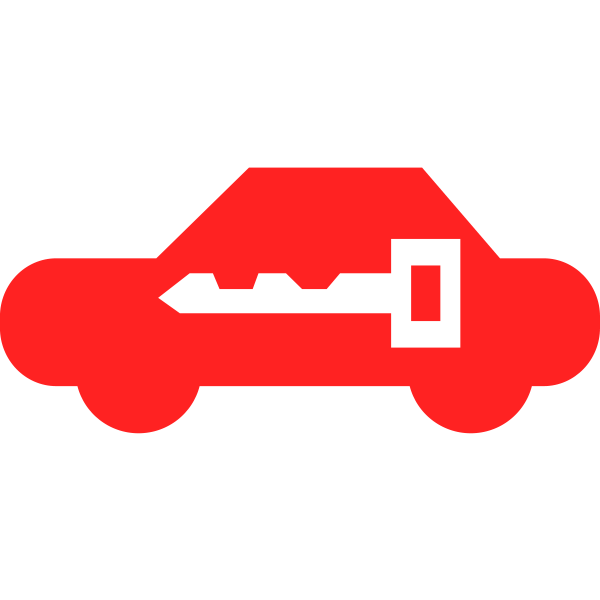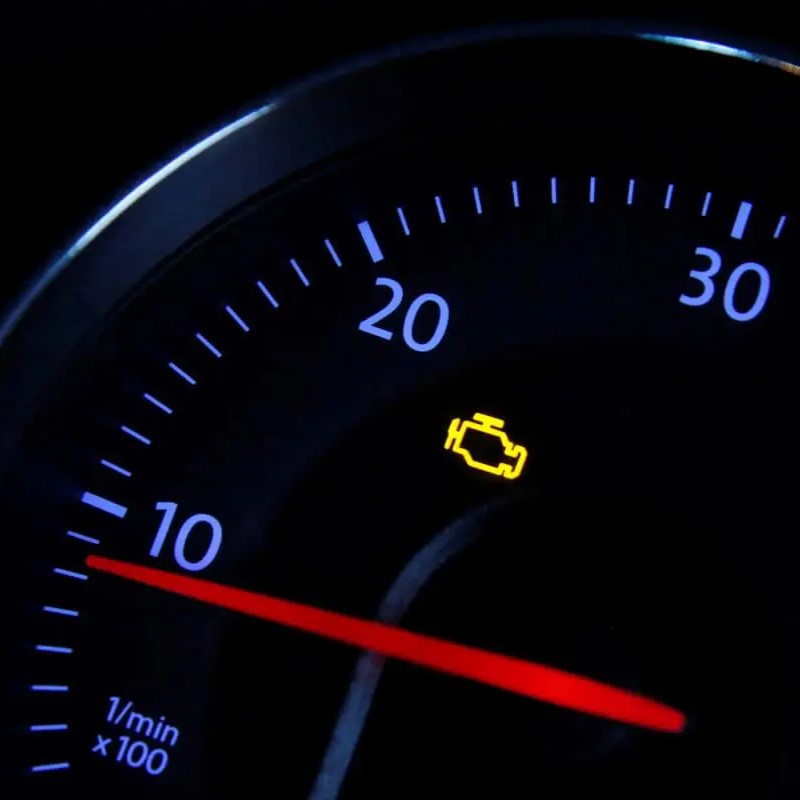Seeing your engine light blink and your car shake can be a frightening experience. It’s a clear sign that something is wrong with your vehicle. But don’t panic. Understanding the potential causes can help you take the right steps.
What Does a Blinking Engine Light Mean?
Typically, a steady engine light indicates a problem that needs attention, but your car is still drivable. However, a blinking engine light is a red flag. It signals a serious issue, often related to the engine’s emissions system. This means you should pull over as soon as it’s safe. Continuing to drive can cause further damage.
Why Does My Car Shake When the Engine Light Blinks?
The shaking sensation you feel is usually caused by a misfire. This happens when one or more cylinders aren’t combusting fuel properly. Unburned fuel escapes into the exhaust system, leading to the blinking engine light.

Common Causes of a Blinking Engine Light and Car Shaking
Several issues can trigger this alarming combination. Let’s explore some of the most common culprits:
- Spark Plugs: These tiny components ignite the air-fuel mixture in your engine’s cylinders. Worn-out or damaged spark plugs can prevent proper combustion, resulting in a misfire.
- Ignition Coils: These parts supply the necessary voltage to the spark plugs. A faulty ignition coil can weaken or prevent the spark, leading to a misfire.
- Fuel Injectors: These components deliver fuel to the cylinders. Clogged or malfunctioning injectors can disrupt the air-fuel mixture, causing misfires.
- Catalytic Converter: While less common, a damaged catalytic converter can also cause engine light blinking and shaking. This component helps reduce harmful emissions.
Other Potential Causes
While less likely, other factors could contribute to the problem:
- Sensor Issues: Various sensors monitor engine conditions. Faulty sensors can provide incorrect information to the engine control unit (ECU), leading to misfires.
- Low Compression: If the compression in one or more cylinders is low, it can cause misfires.
- Engine Mechanical Issues: In rare cases, mechanical problems like a bent valve or piston damage can result in a blinking engine light and shaking car.
What to Do When Your Engine Light Blinks and Your Car Shakes
If you encounter this situation, follow these steps:
- Pull over safely: Find a safe location to stop your car.
- Turn off the engine: Avoid further damage by switching off the ignition.
- Call for assistance: If you’re uncomfortable diagnosing or repairing the issue, contact a roadside assistance service or a tow truck.
- Don’t ignore the problem: Continuing to drive with a blinking engine light can worsen the issue and lead to costly repairs.

Diagnosing the Problem
Pinpointing the exact cause of a blinking engine light and car shaking requires a diagnostic tool. This tool, often called an OBD-II scanner, can read trouble codes stored in your car’s computer. These codes provide valuable clues about the underlying problem.
While you can purchase an OBD-II scanner, it’s often easier and more accurate to have a professional mechanic use the tool. They can interpret the codes and recommend necessary repairs.
Prevention is Key
Regular car maintenance can help prevent issues that lead to a blinking engine light. Here are some essential maintenance tasks:
- Follow the recommended maintenance schedule: Adhere to your car’s owner’s manual for oil changes, filter replacements, and other services.
- Use high-quality fluids and parts: Choose reputable brands for engine oil, coolant, and other fluids.
- Pay attention to warning signs: If you notice any changes in your car’s performance, such as decreased power or rough idling, address the issue promptly.
Expensive repairs
While the cost of a diagnostic scan is relatively affordable, the underlying issue can often lead to expensive repairs. Delaying action can exacerbate the problem, resulting in more damage and a heftier bill.
Common Costly Repairs
- Catalytic Converter Damage: Prolonged misfires can melt the catalytic converter, a pricey component to replace.
- Engine Overhaul: Severe engine damage, caused by persistent misfires, might necessitate a complete engine rebuild, a costly and time-consuming process.
- Sensor Replacement: While individual sensors aren’t extremely expensive, replacing multiple sensors can add up quickly.
How to Potentially Save Money
- Act promptly: Addressing the issue as soon as the engine light blinks can prevent further damage.
- Get multiple quotes: Compare prices from different repair shops to find the best deal.
- Consider aftermarket parts: While genuine parts are often preferred, aftermarket options can be more affordable without compromising quality.
- DIY repairs: If you have mechanical skills, you might save money by tackling some repairs yourself. However, for complex issues, professional help is advisable.
- Warranty coverage: Check your car’s warranty to see if the repairs are covered.
Remember: While it’s tempting to delay repairs to save money, the long-term costs of ignoring a blinking engine light can far outweigh the initial expense.

Get a diagnostic scan
When your engine light blinks and your car shakes, it’s time to enlist a high-tech detective: a diagnostic scan. This process is like a medical checkup for your car, providing crucial clues about what’s ailing it.
What is a Diagnostic Scan?
A diagnostic scan is a computerized examination of your vehicle’s engine control unit (ECU). This onboard computer stores information about the car’s performance and any issues it encounters. A diagnostic tool, plugged into a port typically found under your dashboard, reads this data and translates it into understandable codes.
Why is it Important?
- Pinpoints the problem: Diagnostic scans identify the exact issue causing the trouble, saving time and money on unnecessary repairs.
- Avoids guesswork: Instead of replacing parts randomly, you can target the specific component that needs attention.
- Early detection: Regular scans can uncover potential problems before they escalate into major repairs.
How Does it Work?
- Connect the tool: A technician plugs the diagnostic tool into your car’s OBD-II port.
- Retrieve codes: The tool reads trouble codes stored in the ECU.
- Analyze the data: The technician interprets the codes to identify potential problems.
- Further testing: Based on the codes, they may perform additional tests or inspections.
Where to Get a Diagnostic Scan
- Dealership: Your car’s manufacturer can provide in-depth diagnostics, but it’s often the most expensive option.
- Independent repair shops: These shops offer competitive prices and may have specialized knowledge of certain car models.
- Auto parts stores: Many stores offer free or low-cost code reading services, but they may not provide detailed diagnostics.
What to Expect
The cost of a diagnostic scan varies depending on the shop and the complexity of the issue. Some shops may charge a flat fee, while others bill by the hour.
After the scan, you’ll receive a report detailing the trouble codes and potential causes. The technician will recommend necessary repairs and provide an estimated cost.
Tips for Choosing a Mechanic
- Check reviews: Read online reviews to find reputable shops with experienced technicians.
- Ask for recommendations: Seek advice from friends, family, or other trusted sources.
- Get multiple quotes: Compare prices and services from different shops.
- Trust your gut: If you feel uncomfortable or unsure about a mechanic, find someone else.
By understanding the importance of diagnostic scans and choosing a qualified technician, you can effectively address your car’s problems and keep it running smoothly.
A blinking engine light accompanied by car shaking is a serious issue that demands immediate attention. By understanding the potential causes and taking appropriate action, you can minimize damage and get your car back on the road safely. Remember, prevention is key, so regular maintenance is crucial.





